Flags of Countries in Asia
This page does not include countries that are located in Middle East. To see flags of Middle East countries, please click here.
Afghanistan
Black is a reminder of the country’s past, which was often sad. In the middle you can see a mosque, the place where Muslims pray.
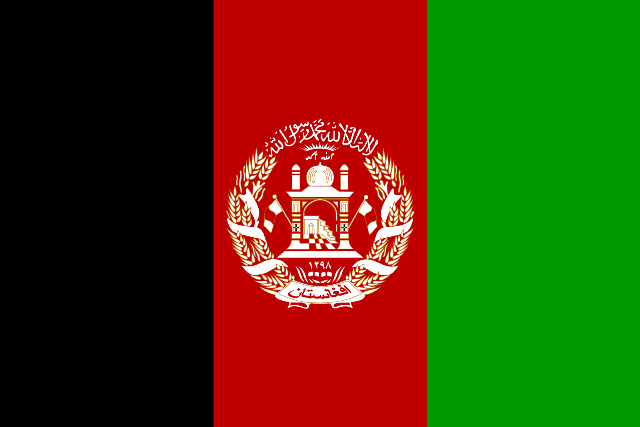
Armenia
The flag of Armenia is striped in red, blue and orange. On the one hand red stands for the Armenian highlands, on the other hand for courage and freedom. Blue symbolizes the sky under which the Armenians live. Orange stands for the fertile soil of the country, but also for the creative population.
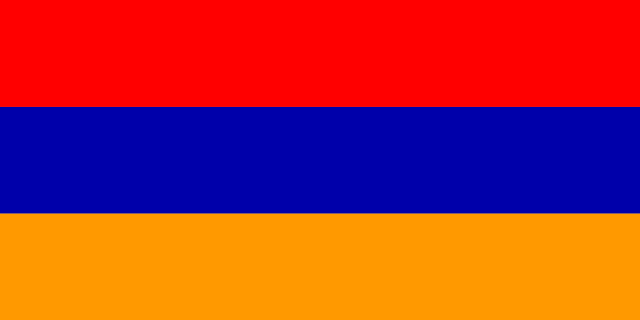
Azerbaijan
The flag of Azerbaijan is light blue-red-green striped. A crescent moon and an eight-pointed star are depicted on the middle red stripe. Blue stands for the sky and freedom, red for life in Azerbaijan and green for nature and the future. The crescent moon is a symbol of Islam, which is the predominant religion in the country. The star stands for the eight peoples of Turkic origin from which the nation of Azerbaijanis was formed.

Bangladesh
Green stands for the fact that the land is very fertile and at the same time for the faith of Islam. The red point stands for the struggle for independence and freedom.
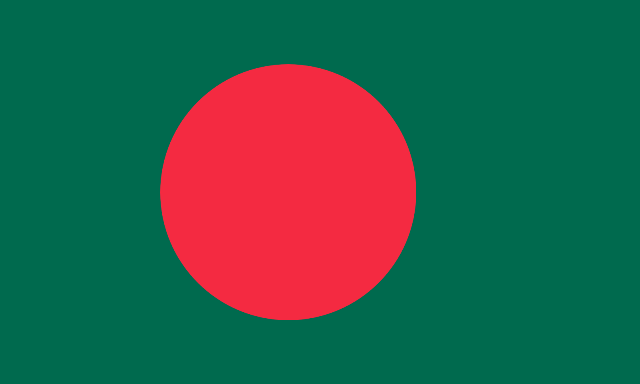
Bhutan
The Bhutanese themselves call their country Druk Yul: Land of the Dragon. That’s why the kite is in the middle of the flag. The saffron yellow color is the color of the king of Bhutan and the orange color stands for Buddhism, which was the state religion until 2008.
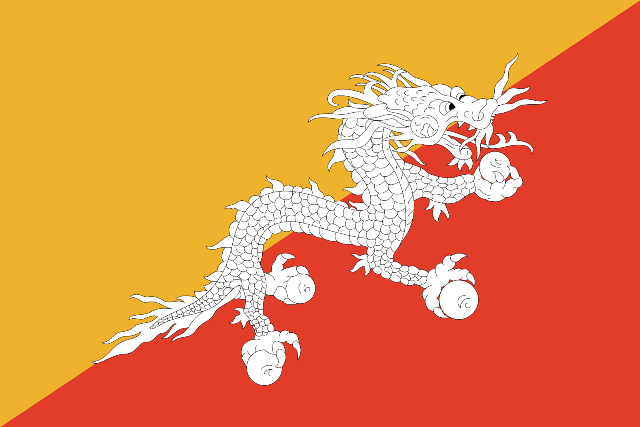
Brunei
The crescent moon lies under the king’s parasol and stands for Islam . The colors of the flag are the colors of the Sultan of Brunei and his ministers.
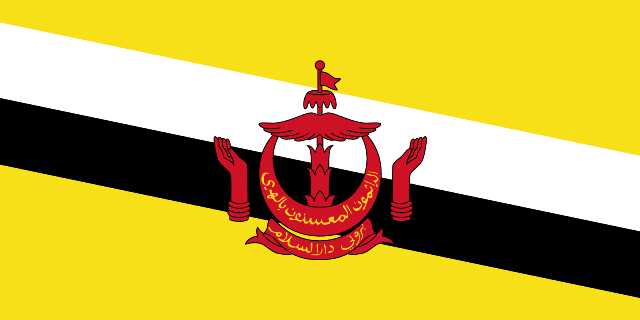
China
The Chinese flag is also called the “Red Flag”. The red is important and was not simply chosen as the color for the flag, because it is the so-called communist red and at the same time the color of the Han Chinese. The yellow stars in the top left also have a meaning. The big star stands for the Communist Party, whose leadership the country is subject to. The smaller stars symbolize the ruled groups of China: workers, peasants, petty bourgeoisie, bourgeoisie (entrepreneurs). The former President of China, Mao Zedong, once divided the Chinese population into these four groups.

Democratic People’s Republic of Korea
Blue represents the sea that surrounds North Korea. Red symbolizes communism , the form of government that prevails in North Korea. White stands for peace.
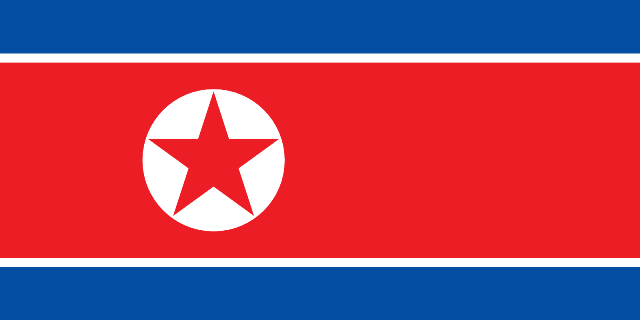
Georgia
Georgia’s flag consists of five red crosses on a white background. A large cross fills the flag and there is a small cross in each of the four parts. This type is also called the Jerusalem cross. It is a symbol of Christ and the four evangelists. The white of the flag also stands for purity, the red for courage.
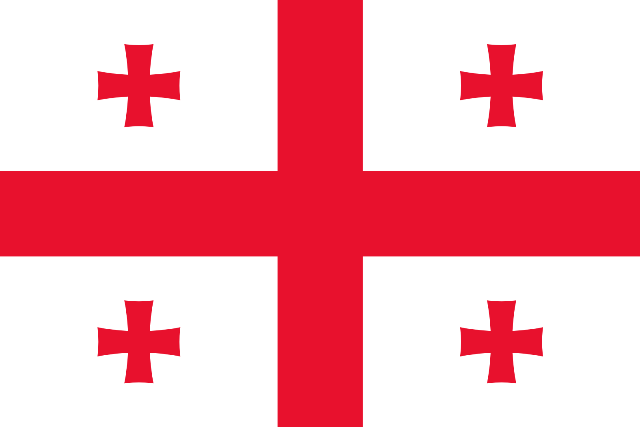
India
There are different views on the color interpretation of India’s flag. Some think that Hinduism is reflected in orange. At the same time, others say that this color stands for sacrifice and courage. There are people who are convinced that white stands for the union of Islam and Hinduism . Others claim, however, that it stands for peace and truth. Even when it comes to green, people don’t quite agree whether it stands for faith and growth or Islam. In any case, the wheel in the middle should remind you that there is life in movement and death in standstill. The 24 spokes of the wheel represent the 24 hours of a day. The wheel is also known as a tiranga .

Indonesia
The Indonesian flag has primarily a historical background, as its origin lies in the Majapahit Empire, which existed during the 13th century. The colors red and white were considered sacred at the time and have retained their meaning from that time until today. The red in the flag symbolizes the body and the white stands for the soul. The two colors and their meanings are equal and in balance.
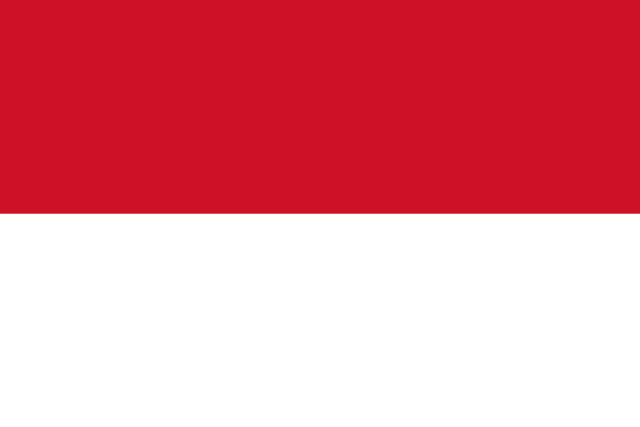
Japan
The red circle stands for the sun on the one hand, pon means “sun” in Japanese. At the same time, it also stands for the Japanese emperor, who is called Tenno. The Japanese see him as a descendant of the sun goddess.
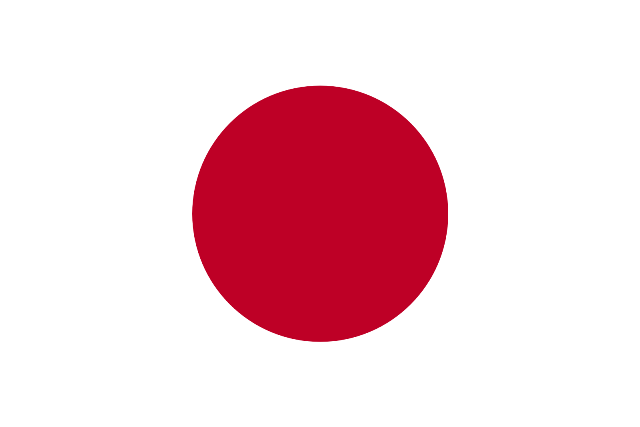
Cambodia
In the flag you can see the colors red and blue, where red stood for the people in earlier times and blue for the king. Because the Cambodian king only plays a symbolic role, today blue stands above all for the treasures of nature. Red represents the blood that the people of Cambodia shed. The temple in the middle shows the symbol of Cambodia, the temple of Angkor Wat.
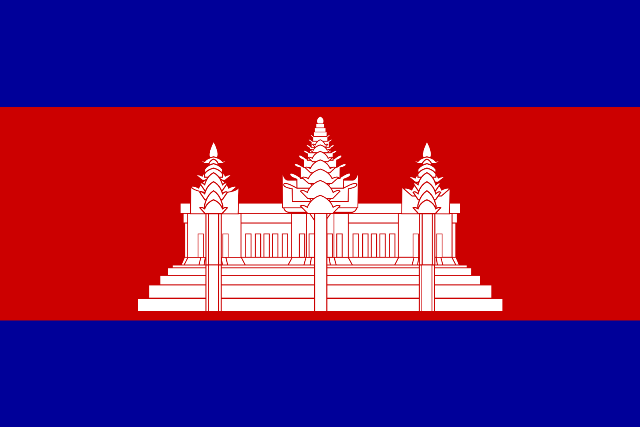
Kazakhstan
The background of the flag is supposed to symbolize the wide sky over Kazakhstan. The sun has 32 rays and represents the freedom of Kazakhstan. The eagles also mean freedom. The left stripe represents the country’s folk art.
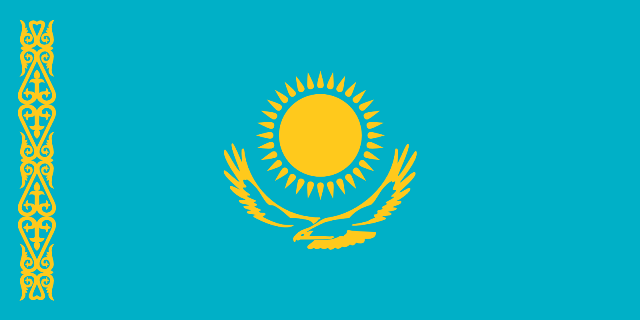
Kyrgyzstan
The country’s flag shows a yellow sun with 40 rays on a red background. In the sun you can see a red circle with crossing lines. Red is one of the traditional Mongolian colors. The 40 rays represent the Kyrgyz tribes. The red circle symbolizes the roof of a yurt, the tent of the nomads in Central Asia.
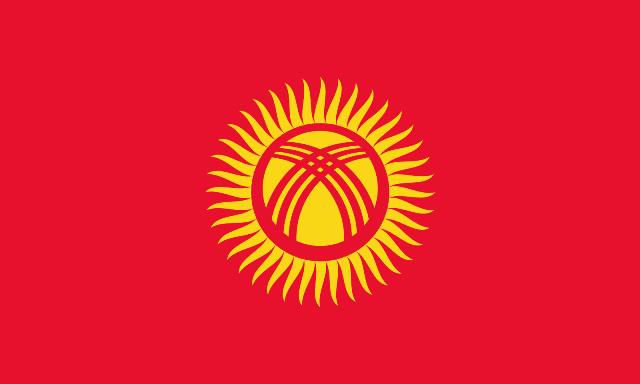
Laos
The circle in the center of the flag shows the full moon rising over the Mekong, the country’s most important and longest river. The red stripes stand for the flood that the inhabitants of Laos – the Laotians – shed in the many struggles for the freedom of their country. The blue stripe stands for the development of the Southeast Asian country, but also for the Mekong River.

Malaysia
At first glance, the flag of Malaysia is a bit reminiscent of that of the USA. In fact, the Malaysians have copied a little something there. Initially, however, the yellow sun only had eleven rays and there were also only eleven stripes instead of 14 as today. The rays and stripes represent the states that belong to Malaysia. And there have been a few more in recent decades. The blue rectangle on the top left stands for unity and strength of the population, the crescent for Islam .

Maldives
The flag of the Maldives was originally just red. This was typical for Islamic seafaring states and was intended to represent the close trade connections with the countries around the Persian Gulf. In 1948 Ceylon became independent and the green rectangle was added to the flag. Green stands for Islam , as does the crescent moon in the flag.
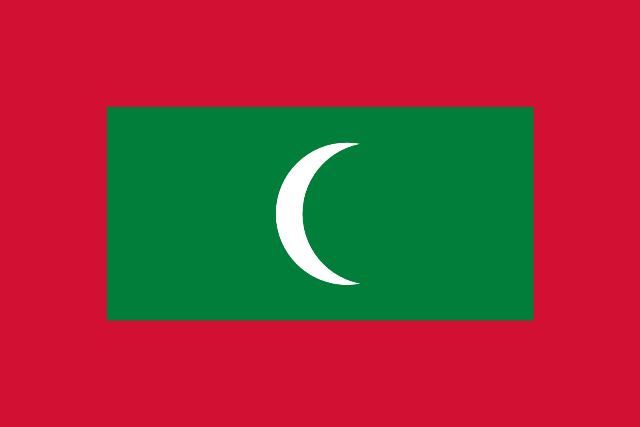
Mongolia
The red color represents socialism and the blue color represents the sky. Until 1992 the star of communism crowned the old Mongolian symbol on the left.

Myanmar
The rice ear stands for rice cultivation and agriculture, which are important for the country and the cog wheel for the industry that is growing. The 14 stars stand for the states of the country. Red is the color of courage and blue is the color of peace.
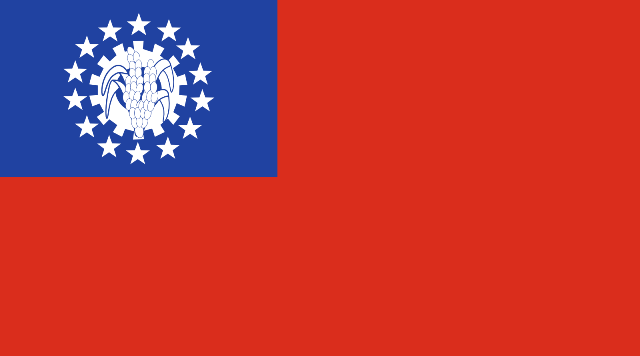
Nepal
The Nepalese flag includes the colors red and blue. Red stands for victory in war and for the color of the flowers of the rhododendron plant. The blue color represents peace. The crescent moon on the top triangle of the flag symbolizes the royal house and the sun below it symbolizes the Rana family, who had much influence in the country for a while. There is another reason why Nepal’s flag is quite unusual, as it is neither rectangular nor square, but rather has the shape of two triangles on top of each other.

East Timor
The colors red and yellow in the flag stand for the struggle for independence and the black color for the time of oppression, that was the colonial era. The white star points to a future in which peace should reign.

Pakistan
Both the green color of the flag and the crescent moon stand for Islam , which is very strongly represented in Pakistan. But there are not only Muslims in the country, there are also people of different faiths. The white bar on the left represents these people. The little white star is a symbol of knowledge, enlightenment and enlightenment. The combination of the colors green and white represents peace and prosperity.

Philippines
The stars on the flag of the Philippines represent the two largest islands, Luzon and Mandanao, and the islands of the Visayas. The sun has eight rays to commemorate the eight provinces that fought for the independence of the Philippines. The color blue stands for love for the fatherland and red for courage.
Republic of Korea
Yin and Yang are depicted in the blue-red circle. For many Asians, this symbol symbolizes the philosophy of balance and harmony of opposites. This philosophy of opposites can also be found in the black bars in the corners of the flag. Such symbols are called trigrams. Yin is symbolized by a broken bar and Yang by a solid bar. The white background is supposed to represent the South Korean people and their purity.
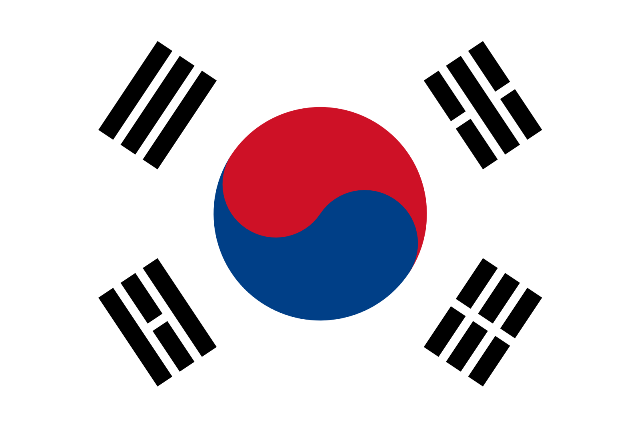
Russia
The Russian flag has three horizontal stripes in white, blue and red. Tsar Peter the Great introduced the flag. He chose the colors from the coat of arms of the Principality of Moscow. White stood for freedom, blue for the Mother of God and red for tsarism. The colors are being reinterpreted today: white stands for faith and nobility, blue for hope and honesty, and red for love, courage and bravery.

Singapore
The national flag of Singapore looks very similar to that of Indonesia. It has a horizontal red stripe above and a white stripe of equal size below. The red stands for universal brotherhood and equality and white for both virtue and purity.
There is also a symbol in the upper left corner of the flag that distinguishes the Singaporean from the Indonesian flag. It shows a white crescent moon with five stars arranged in a circle. The moon represents a young and rising nation and the five stars represent the ideals and values of Singapore. These are democracy, peace, progress, equality and justice.

Sri Lanka
With the flag of Sri Lanka one should pay particular attention to the colors to recognize the meaning. Green and saffron orange stand for the two minorities of Sri Lanka, namely the Tamils and the Muslims. The red, against the background of which the lion is depicted, stands for the bloodshed in the struggle for the country’s independence. The yellow background symbolizes peace. The lion in the middle comes from the previous Kingdom of Kandy, which existed during the British occupation. It is supposed to represent bravery. The four leaves in the corners stand for the virtues of goodness, compassion, compassion and equanimity.

Tajikistan
The colors of the Tajik flag are red, white, and green, with the middle white stripe wider than the other two. Red stands for the unity of the people, white stands for cotton and snow and green symbolizes the fertile valleys. In the middle you can see a golden crown and stars. They stand for the people, because the word tâj , from which the country name is derived, means crown.
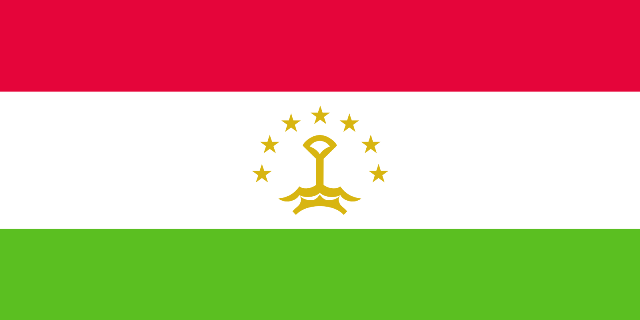
Thailand
The colors of the Thai flag each have their own meaning. The color red stands for the blood of the people. The white stands on the one hand for the Buddhist faith and on the other hand for the purity. The blue stands for the monarchy and has only been part of the Thai flag since 1917.

Turkmenistan
The flag of Turkmenistan is green. This color stands for Islam, as does the white crescent moon. The five white stars refer to the five Turkic peoples or tribes of the country. In the left area there is a ribbon over the flag showing five traditional carpet patterns. Two olive branches are depicted below on this volume. You stand for peace.
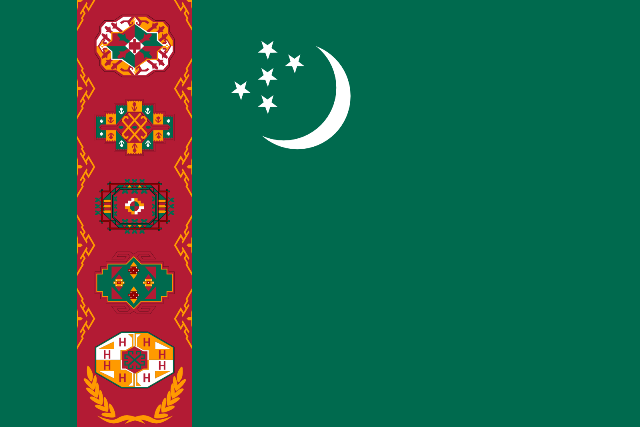
Uzbekistan
Blue, white, and green are the main colors of the Uzbek flag. They represent heaven, the cultivation of cotton and the hospitality of the Uzbeks. The thin, red stripes are a symbol of the strength of the people. The crescent moon stands for Islam, to which most of the residents belong. Twelve stars stand for the twelve provinces of the country.
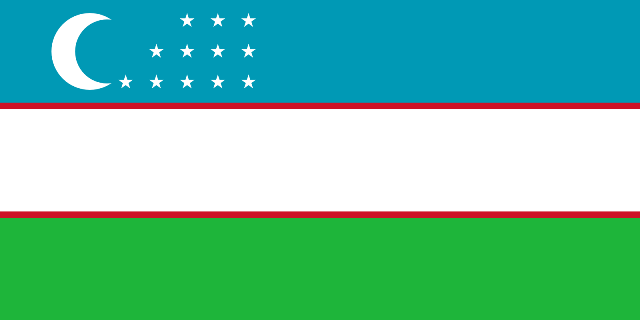
Vietnam
The flag of Vietnam is intended to commemorate the country’s history. The color red stands for the revolution and the blood of those who died for it. The yellow star is a socialist symbol, with each point representing one of the five groups that promote socialism: farmers, workers, intellectuals, soldiers and young people.
